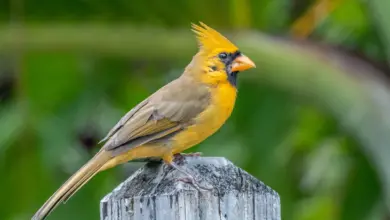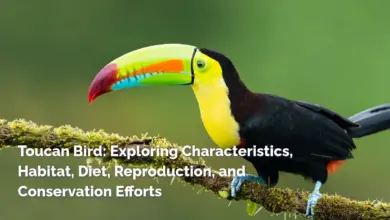Dove Bird: A Comprehensive Guide to Their Description, Habitat, and Behavior
Doves are small to medium-sized birds that belong to the family Columbidae, which encompasses not only doves but also pigeons. Known for their gentle nature and striking beauty, doves are often associated with peace and love in various cultures. These birds exhibit a wide range of colors, shapes, and behaviors, which makes them intriguing subjects of study. Throughout history, doves have held symbolic significance in art, religion, and folklore, reinforcing their status as birds of beauty and grace. Their soothing cooing sounds resonate in various ecosystems, making them easily recognizable. In this article, we will explore the physical characteristics, habitats, diets, behaviors, and cultural significance of doves, providing a comprehensive overview of these remarkable birds.
Description of Dove Birds
Dove Birds share several distinctive physical characteristics, which help to differentiate them from other avian species. They generally have stout bodies, short legs, and short, conical beaks. Unlike many birds that boast flashy colors, some species of doves exhibit more muted tones, while others showcase brilliant colors and intricate patterns in their plumage. For instance, the African collared dove presents a more uniform tan exterior, in contrast to the pink-headed fruit dove, which dazzles with its bright pink head and vibrant coloration throughout its body. This diversity in appearance is not just for show; it serves practical purposes such as camouflage in their natural habitat.
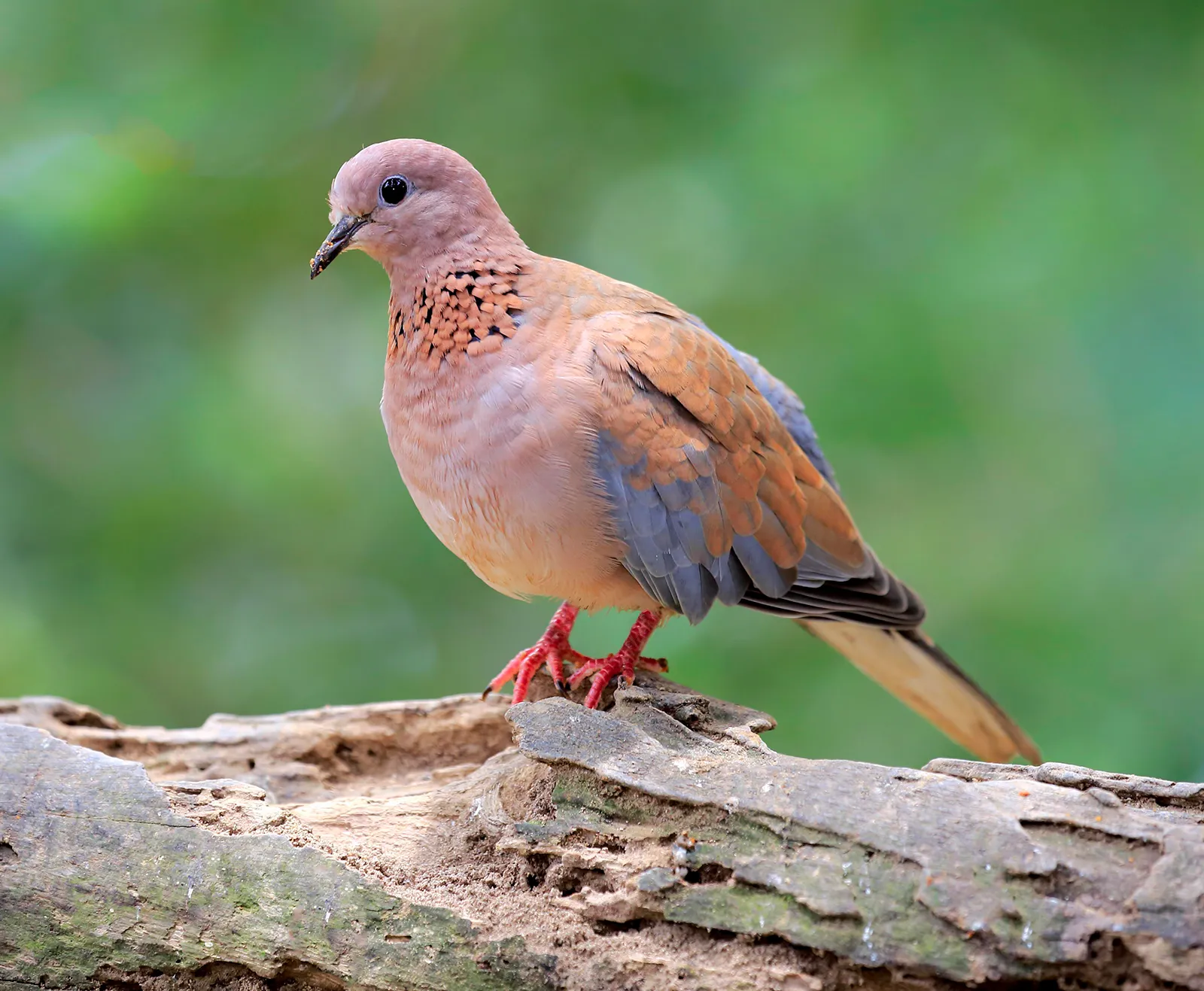
Dove Birds are also known for their unique vocalizations, with those soft, melodic coos often evoking feelings of tranquility and affection. Their gentle sounds play a vital role in communication within their species and help facilitate mating and bonding rituals. Furthermore, doves have a penchant for social interactions; they often forage in small groups and exhibit behaviors that reinforce strong pair bonds, such as preening and mutual feeding. The dynamics of their social structure are fascinating, showcasing a blend of both independence and communal living.
Physical Characteristics
The physical attributes of doves vary considerably across species but generally include the following:
- Body Structure: Doves typically boast stout, compact bodies that are robust in structure. With small, rounded heads and short legs, they are well-suited for perching, foraging, and flight.
- Feathers: The feathers of doves are soft to the touch and vastly diverse in terms of colors and patterns. For example, the mourning dove is predominantly brownish-gray, adorned with subtle markings like a distinctive black spot on its wings and neck region.
- Tail: Many dove species exhibit long, pointed tails that contribute to their agility in flight. The mourning dove, for instance, possesses a long fan-shaped tail, which is starkly contrasted with white tips, further enhancing its aesthetic appeal.
- Eyes: Doves are characterized by their large, expressive eyes, often brown and encircled by a vivid blue ring of bare skin. This unique eye structure allows them enhanced vision critical for spotting potential predators in their environment.
- Size: Doves range from 23 to 34 cm in length, with an average wingspan spanning between 38 to 46 cm. Importantly, the Common Ground Dove is relatively smaller, measuring about 17 cm in length.
| Feature | Description |
|---|---|
| Body Structure | Stout, compact with robust structure |
| Feathers | Soft, diverse colors and patterns |
| Tail | Long, pointed, enhances flight dynamics |
| Eyes | Large, brown, encircled by blue skin |
| Size | 23 – 34 cm in length; wingspan 38 – 46 cm |
In sum, the physical characteristics of doves reflect their adaptation to the environments they inhabit. Their stout bodies and camouflage plumage help them thrive in various habitats, from dense forests to urban gardens.
Color Variations
The coloration of Dove Birds is profound, reflecting a spectrum of adaptations to their environments. Doves can be classified into various species, each presenting unique color patterns that serve both aesthetic and survival functions. For example, the African collared dove typically exhibits a uniform tan color that provides camouflage in its natural grassland habitat. In contrast, the pink-headed fruit dove showcases a striking palette with its bright pink head and vibrant green body.
Additionally, doves’ coloration can aid in social interactions within their species. The bright plumage of certain species might attract mates more effectively than duller feathers. This is particularly evident in courtship displays, where males often flaunt their brightly colored feathers to impress potential partners.
When exploring color variations among doves, one can observe the following notable examples:
- Mourning Dove: Predominantly brownish-gray, this coloration allows them to blend seamlessly into their grassland habitats.
- Inca Dove: This species exhibits a unique pattern of scaling along its feathers, presenting a rather greyish-brown overall appearance that’s effective for camouflaging.
- Nicobar Pigeon: Although classified within the pigeon family, this species is closely related to doves and showcases striking iridescence akin to the vibrant hues found in doves.
| Dove Species | Coloration Description |
|---|---|
| Mourning Dove | Brownish-gray with subtle markings |
| Inca Dove | Greyish-brown with scaling patterns |
| Nicobar Pigeon | Iridescent plumage with a mix of greens and blues |
The vibrant colors can enhance their social status or breeding success. This dynamic interaction between their colors and behaviors exemplifies the complexity of their roles in both their ecosystems and social structures.
Size and Weight
The size and weight of dove species vary widely depending on their environment and specific adaptations. On average, Dove Birds tend to range from 20 to 30 cm in length, with weights that oscillate between 100 to 200 grams generally. However, several notable examples demonstrate the impressive diversity within this family:
- Common Mourning Dove: Ranges from 23 to 34 cm in length and weighs about 86 to 170 grams.
- Eurasian Collared Dove: Typically measures between 30 to 33 cm in length and can weigh around 170 to 200 grams.
- Pygmy Dove: One of the smallest members of the family, this species typically measures around 15 cm in length and weighs only about 40 grams.
Here is a summarized comparison of these measurements:
| Dove Species | Average Length (cm) | Average Weight (grams) |
|---|---|---|
| Common Mourning Dove | 23 – 34 | 86 – 170 |
| Eurasian Collared Dove | 30 – 33 | 170 – 200 |
| Pygmy Dove | 15 | 40 |
The comparative metrics of different dove species reveal a fascinating aspect of their biology, reflecting how body size and weight can influence their feeding habits, choice of habitat, and overall survival strategies. Larger species may be better suited for open landscapes, while smaller species can effectively occupy more confined spaces.
Habitat of Dove Birds
Dove birds thrive in a multitude of habitats, showcasing their adaptability to different environments. They are commonly found in diverse ecosystems that range from grasslands and savannas to forests, deserts, and even urban areas. Dove Birds often nest in locations that offer shelter and easy access to food, which is instrumental for their survival and reproduction.
- Diversity of Habitats: Doves adapt well to various ecosystems including open fields, woodlands, and urban environments. Their ability to thrive in both natural and human-modified areas speaks volumes about their resilience.
- Specific Habitat Types:
- Grasslands and Savannas: These regions provide ample space for foraging seeds and grains. Doves can easily find nesting materials such as twigs and grasses.
- Forests and Woodlands: Here, doves often find sanctuary. Several species prefer nesting high in trees, safe from ground predators.
- Deserts: Certain species can withstand arid climates, utilizing scrublands as suitable habitats.
- Urban Areas: Increasingly, doves have adjusted to city life, nesting in parks and gardens where they exploit bird feeders and cultivated plants.
- Nesting Preferences: Doves typically construct their nests in trees or shrubs, using twigs and leaves to create a simple yet effective structure. In places where vegetation is sparse, they may settle for ground nesting, particularly in areas with low shrubs or grasses.
- Geographic Distribution: Doves are widespread across the globe, with their presence evident throughout every continent except Antarctica. Their adaptability allows them to occupy a wide range of ecological niches.
- Adaptations to Habitats: Different dove species exhibit unique adaptations for surviving in their respective environments. For instance, mourning doves are mostly brownish-gray, allowing them to remain undetected among bark and foliage during the day.
| Habitat Type | Description |
|---|---|
| Grasslands | Rich in seeds and open foraging spaces |
| Forests | Offer nesting opportunities and shelter |
| Deserts | Support specific species adapted to arid conditions |
| Urban Areas | Utilize human structures for nesting and feeding |
The ability of dove birds to flourish across such varied habitats emphasizes their ecological significance and enhances their role as indicators of a healthy environment.
Natural Habitats
Dove birds exhibit considerable versatility in their ability to survive and flourish in various natural habitats. Their habitats include:
- Tropical and subtropical forests: Some species prefer densely wooded areas, where they can find ample cover and abundant food sources. The lush environment supports their varied diets, comprising seeds, fruits, and insects.
- Grasslands and open fields: Mourning doves, for example, are frequently found in open grasslands and fields where they can readily forage for seeds scattered on the ground.
- Urban surroundings: Demonstrating adaptability, doves have successfully established themselves in urban environments, utilizing parks, gardens, and buildings for nesting and feeding. They often rely on food sources provided by human activity, such as bird feeders.
- Wetlands: Certain dove species can also be found near wetlands, where they feed on seeds from aquatic plants.
The versatility and adaptability of dove birds showcase their ecological roles while emphasizing their significance as essential components of various ecosystems.
Geographic Distribution
Dove birds are distributed across vast geographic regions, inhabiting a range of environments worldwide. Their presence can be noted in various continuity, highlighting their adaptability to different climates and ecosystems.
- North America: One of the most commonly recognized species here is the mourning dove, which can be found throughout the United States, Canada, and parts of Mexico. With its plain-colored feathers and distinctive cooing calls, this species can be readily spotted in urban areas and rural fields alike.
- South America: Various dove species are observed in this continent, notably within the Amazon rainforest, where ample food resources create ideal habitats. The white-winged dove is commonly found in urban settings across the southwestern United States and into Mexico.
- Africa: Doves inhabit numerous regions, from forests to grasslands. The African collared dove thrives in areas with abundant food and cover, while other species are more forest-adaptable.
- Asia and Australia: Doves, such as the spotted dove, are prevalent in urban areas throughout Southeast Asia. The Nicobar pigeon, closely related to doves, is native to several islands in the Indian Ocean.
- Europe: The Eurasian collared dove has established a strong presence in many European countries, often seen in urban habitats and rural farmlands.
| Region | Common Dove Species |
|---|---|
| North America | Mourning Dove |
| South America | White-winged Dove |
| Africa | African Collared Dove |
| Asia | Spotted Dove, Nicobar Pigeon |
| Europe | Eurasian Collared Dove |
The rich diversity of dove species across various geographic landscapes exemplifies their capacity to adapt and thrive, making them vitally important to the ecosystems they occupy.
Nesting Preferences
The nesting preferences of dove birds play a crucial role in their reproductive success. These birds exhibit specific behaviors and strategies that enable them to establish nests in a variety of environments.
- Nest Location: Most dove species prefer to nest in trees or shrubs due to the protection they offer from predators. Some species will also nest on ledges, in building eaves, or on the ground, depending on the availability of suitable sites.
- Nesting Materials: Doves generally construct simple nests using twigs, grasses, and leaves. The materials are usually gathered by the male, who brings them back to the nesting site, where the female helps shape the nest.
- Recycling: Doves may return to the same nesting sites year after year, often reusing and renovating older nests. This behavior not only saves time but also takes advantage of the established location.
- Nest Design: The structure of the nest is typically shallow and open, consisting of little more than a simple platform made from twigs and grasses. This design allows for easy access for both parents and their chicks.
- Safety Considerations: The choice of nesting sites is critically influenced by the need for safety and accessibility to food sources. Dense foliage or urban alcoves provide essential cover for both the eggs and the young chicks, allowing them to remain hidden from potential threats.
Dove Birds can exhibit some diversity in their nesting preferences based on species and habitat, but their chosen strategies reflect the importance of safety, accessibility, and resource optimization. Through these nesting behaviors, doves can effectively contribute to the stability and growth of their populations.
Diet of Dove Birds
Dove birds are primarily granivorous, with their diet predominantly consisting of seeds and grains. This granivorous lifestyle is further enhanced by their adaptability, allowing them to consume a variety of other food sources, including fruits and insects, depending on availability and environmental conditions.
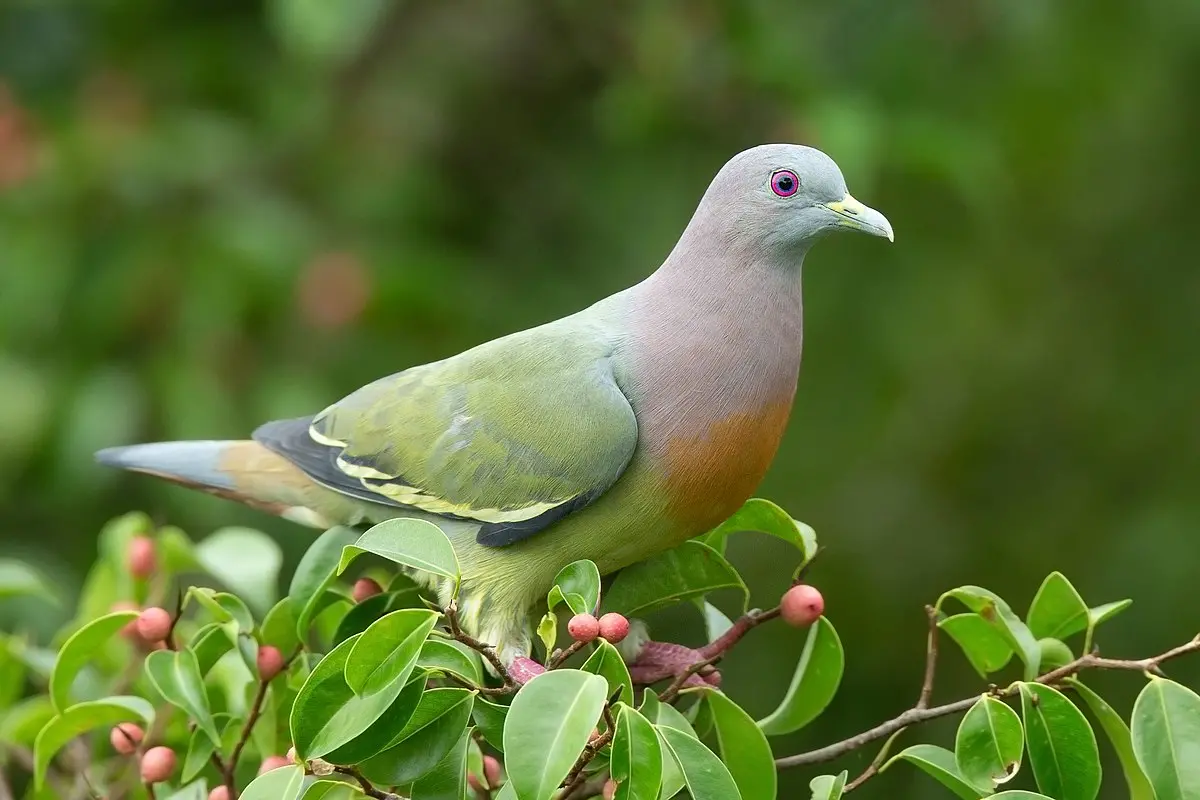
Types of Food
- Seeds and Grains: Doves feed on an extensive range of seeds, including:
- Sunflower seeds: Highly favored and nutrient-rich.
- Millet: Commonly found in wild grasslands and an essential food source.
- Cracked corn: Often used in bird feed, providing energy and hydration.
- Wheat and other grains: Accessible in agricultural environments.
- Fruits and Vegetables: In addition to seeds, doves enjoy:
- Berries: Such as strawberries, blueberries, and blackberries, which provide essential vitamins.
- Chopped fruits: Apples and grapes are also favored for additional hydration and nutrients.
- Insects: During nesting seasons, doves may consume:
- Small insects: Such as ants, beetles, or caterpillars for protein to nourish growing chicks.
- Earthworms and snails: Occasionally sought for added nutrition during breeding periods.
- Grit: Doves require grit to aid their digestion, as they lack teeth. This grit typically consists of small stones or crushed shells that help grind down their food within their gizzard.
| Food Type | Description |
|---|---|
| Seeds and Grains | Sunflower seeds, millet, cracked corn, wheat |
| Fruits and Vegetables | Berries, apples, chopped fruits |
| Insects | Ants, beetles, earthworms |
| Grit | Small stones or crushed shells for digestion |
Feeding Behavior
Dove Birds display unique and adaptable feeding behaviors that reflect their lifestyle and dietary needs. Their foraging strategies can be summarized in several key points:
- Ground Foraging: Doves typically forage on the ground to find scattered seeds and grains. Their feeding behavior actively takes them to areas with ample food sources, including fields, gardens, and bird feeders.
- Opportunistic Feeding: As opportunistic feeders, doves adapt their diet based on seasonal availability. They may shift their preference from seeds and grains in the summer to fruits and insects in the spring.
- Drinking Habits: Doves exhibit a unique drinking method; they do not tilt their heads back to drink water. Instead, they suck up water like a straw, allowing for effective hydration without unnecessary spilling.
- Feeding Clusters: Doves often feed in small groups, which is beneficial for social interaction and locating food. This behavior also allows them to remain vigilant against potential predators.
- Daily Feeding Patterns: Doves are primarily diurnal, feeding during daylight hours. They often forage in the early morning or late afternoon when food is plentiful, and predators are less active.
The feeding behavior of doves illustrates their adaptability and efficiency in finding food sources that meet their dietary needs. Their foraging strategies and ability to thrive in diverse environments exemplify their ecological importance.
Adaptations for Survival
Dove birds possess various adaptations that enhance their chances of survival in different environments. These adaptations contribute to their success in finding food, nesting, and avoiding predators. Key adaptations include:
- Granivorous Diet: Doves’ reliance on seeds within their habitats allows them to thrive, especially in areas abundant in grasslands or fields. Their digestive systems are particularly efficient in processing hard seeds, maximizing energy absorption.
- Camouflage: Their plumage, often characterized by muted and natural colors, provides effective camouflage within their surroundings. This adaptation plays a crucial role in evading detection by predators while foraging.
- Efficient Foraging: Doves have evolved to have short but powerful beaks, allowing them to crack seeds and grains easily. This efficiency enables them to access various food sources quickly.
- Social Feeding Behavior: Foraging in groups enables doves to maintain heightened vigilance against potential threats, while also enhancing their social interactions.
- Flexible Diet: Their adaptability to various diets further contributes to their survival. Doves can shift their nutritional intake based on seasonal and environmental changes, allowing them to thrive in fluctuating conditions.
These essential survival adaptations highlight the resilience of dove birds as they navigate the challenges presented by their environments. Their ability to thrive across various ecosystems demonstrates the significance of preserving their habitats for future generations.
Behavior of Dove Birds
Dove birds exhibit a range of fascinating behaviors that reflect their social structure and ecological roles. These gentle creatures are often seen as symbols of peace and love, and their behaviors contribute to their enduring reputation. Below are some aspects of their behavior:
- Social Structure: Doves often live in pairs or small flocks, exhibiting strong pair bonds and cooperative behaviors. Their social dynamics play a vital role in their daily activities, from foraging together to nesting.
- Communication: Doves communicate primarily through vocalizations, with their soft cooing sounds serving multiple purposes. These vocalizations help mark territory, attract mates, and strengthen social connections.
- Nesting and Parental Care: Doves typically engage in collaborative nesting, with both male and female partners participating in incubating eggs and caring for their hatchlings. They produce “pigeon milk,” a nutrient-rich secretion that feeds their young during the initial days post-hatching.
- Feeding Habits: Social feeding behavior is also prevalent among doves. They often forage in small groups, which not only promotes sociability but also allows them to access food resources more effectively.
- Territorial Behavior: While generally peaceful, doves can exhibit territoriality, particularly during the breeding season. Males may defend their nesting territories from other males, using vocalizations and displays to assert dominance.
| Behavior Type | Description |
|---|---|
| Social Structure | Pairs or small flocks with strong bonds |
| Communication | Cooing for marking territory and attracting mates |
| Nesting and Care | Both partners incubate eggs and feed the young |
| Feeding Habits | Foraging in groups for seeds and grains |
| Territorial Behavior | Males assert dominance during breeding season |
These behaviors elucidate the sociable nature of doves and their unique ecological roles, highlighting their importance within various ecosystems.
Social Structure
The social structure of dove birds is characterized by a combination of pair bonding, flocking behaviors, and cooperative parenting. Here are some key components of their social dynamics:
- Monogamous Pair Bonds: Doves typically forge long-lasting pair bonds, often mating for life. This monogamous behavior is reinforced through courtship rituals, where males display their plumage and coo to attract females. The connection between partners is strong, facilitating mutual grooming and affection.
- Flock Dynamics: While doves often form strong pair bonds, they also demonstrate social behaviors in groups. They may forage in small flocks, providing safety in numbers while searching for food.
- Cooperative Parenting: Both male and female doves share responsibilities in rearing their young. After building a nest, they take turns incubating the eggs and feeding the chicks, fostering a collaborative environment for nurturing.
- Territoriality: During the breeding season, male doves establish territories that they defend against rival males. They utilize vocalizations and displays to mark their presence, ensuring they have optimal resources for successful breeding.
- Communication: Doves rely on vocalizations and body language for communication. Their cooing conveys various messages, while physical displays like bowing, preening, and wing-flapping enhance social interactions.
| Social Structure Component | Description |
|---|---|
| Monogamous Pair Bonds | Lifelong partnerships between males and females |
| Flock Dynamics | Foraging in small groups for safety |
| Cooperative Parenting | Shared responsibilities in rearing young |
| Territoriality | Males defending breeding territories |
| Communication | Vocalizations and displays for interaction |
This intricate social structure contributes to the success of Dove Birds as they navigate their environments, forge meaningful relationships, and ensure the survival of their young.
Communication Methods
Dove birds employ a range of communication methods to express their needs, establish social bonds, and navigate their environments. These methods include both vocalizations and body language, facilitating interaction with other Dove Birds and potential mates.
- Vocalizations: Doves are known for their soft and melodic cooing sounds. For example, plains doves produce distinctive calls that males use during mating season to attract females. These coos can vary slightly between different species, reflecting their individual cues in communication.
- Behavioral Signals: Body language also plays an essential role in dove communication. Doves often engage in physical displays, including puffing out their chests, bowing, and mutual preening. Such behaviors reinforce pair bonds and help signal courtship readiness.
- Postures and Movements: Doves utilize various postures and movements to convey their feelings. A dove that extends its wings while bobbing its head or puffing its chest might be displaying attraction or asserting dominance.
- Wing Whistles: When doves take off or land, their wings produce distinct whistling sounds. These sounds can alert neighboring doves about nearby predators, enhancing group safety.
- Individual Recognition: Doves can also recognize and respond to the calls of their partners. This individual recognition fosters stronger pair bonds and ensures cohesive communication within established relationships.
| Communication Method | Description |
|---|---|
| Vocalizations | Soft cooing sounds for attraction and signaling |
| Behavioral Signals | Physical displays such as puffing and bowing |
| Postures and Movements | Distinct postures to express attraction or dominance |
| Wing Whistles | Sounds produced during flight to alert others |
| Individual Recognition | Partners recognize each other’s calls |
These communication methods illustrate the complex social interactions among doves and their ability to convey information through various channels, enhancing their social organization and overall well-being.
Mating Rituals
The mating rituals of dove birds are a delicate dance of courtship that highlights their social behaviors and instincts. These rituals serve to establish strong pair bonds and ensure successful reproduction.
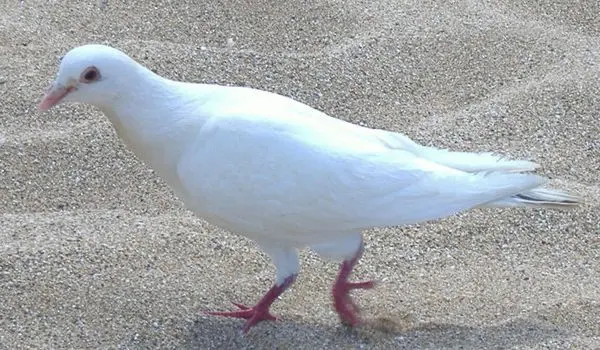
- Courtship Displays: During the mating season, male doves exhibit elaborate courtship displays to attract females. This often includes aerial displays, where they loop gracefully in the air and create wing whistles. The visual splendor of these flights serves not only to entice potential mates but also reflects the male’s fitness.
- Cooperative Behaviors: Mating rituals start with mutual preening and feeding, which strengthen social bonds. This cooperative behavior fosters emotional connections and creates a supportive environment for reproduction.
- Vocalizations: Throughout the courtship process, males use a specific series of cooing calls. These vocalizations not only signal their readiness to mate but also serve to reassure their partners of their presence and commitment.
- Nesting Collaboration: Following successful courtship, pairs collaborate to establish a nest. The male typically collects materials like twigs and grasses, while the female organizes the nest structure. This teamwork helps build a secure environment for their future offspring.
- Mating Process: The actual mating occurs quickly once the bond is established, with males mounting the females. This brief yet essential act is vital for reproduction, allowing the female to lay eggs shortly after.
| Mating Ritual Element | Description |
|---|---|
| Courtship Displays | Aerial loops and wing whistles for attraction |
| Cooperative Behaviors | Preening and feeding to strengthen bonds |
| Vocalizations | Specific calls signaling readiness to mate |
| Nesting Collaboration | Teamwork in building a secure nest |
| Mating Process | Quick act that leads to reproduction |
The intricate and multifaceted nature of these mating rituals reflects the importance of social bonding and collaboration in the dove species. By engaging in these behaviors, doves can successfully navigate the challenges of reproduction and enhance their chances of raising healthy young.
Interesting Facts about Dove Birds
Dove Birds are not just beautiful birds; they also possess a variety of fascinating traits and characteristics that contribute to their allure and cultural significance. Here are some interesting facts about doves:
- Symbol of Peace: Doves are universally recognized as symbols of peace, often depicted in art and literature as representations of tranquility and harmony.
- Monogamous Lifelong Bonds: Most dove species, such as the mourning dove, are monogamous and mate for life. They form strong partnerships that contribute to the nurturing of their young.
- Efficient Nutritional Adaptations: Doves can digest seeds more efficiently than many other birds due to their specialized digestive systems, enabling them to thrive in a variety of habitats.
- Remarkable Navigation Skills: Doves possess excellent homing abilities, allowing them to find their way back to their nests over long distances. This trait has made them invaluable in historical contexts, particularly during wartime communication.
- Religious Significance: In many cultures, doves hold spiritual and religious significance. In Christianity, for example, the dove represents the Holy Spirit and is often seen as a symbol of purity and hope.
- Longevity: Doves typically have a lifespan of 1.5 years in the wild but can live up to 19 years in captivity under optimal conditions, demonstrating their resilience in safe environments.
- Diverse Diets: While primarily granivorous, some dove species exhibit flexibility in their diets. They may consume fruits, grains, and even insects based on the seasonal availability of these resources.
| Fact | Description |
|---|---|
| Symbol of Peace | Universally recognized figure of tranquility and harmony |
| Monogamous Lifelong Bonds | Most species mate for life and engage in cooperative parenting |
| Efficient Nutritional Adaptations | Specialized digestive systems for optimal seed digestion |
| Remarkable Navigation Skills | Exceptional homing abilities for returning to nests |
| Religious Significance | Spiritual symbolism in various cultures, particularly Christianity |
| Longevity | Lifespan of up to 19 years in captivity |
| Diverse Diets | Flexibility in diet based on seasonal availability |
These intriguing facts showcase not only the biology of doves but also their cultural impact, underlining their importance in both nature and human society.
Cultural Significance
Dove Birds hold deep cultural significance across various societies and traditions, often embodying values that resonate with their gentle nature. This cultural significance can be seen in various aspects:
- Symbol of Peace: Doves are widely recognized symbols of peace and tranquility. This association is deeply rooted in history and can be traced back to biblical stories, particularly the account of Noah’s Ark, where a dove returned with an olive branch indicating the end of the Great Flood.
- Artistic Representations: Throughout history, doves have been depicted in art and literature as symbols of love and hope. They are frequently represented in renaissance paintings, poetry, and modern media as messengers of unity and understanding.
- Religious Significance: In Christianity, doves symbolize the Holy Spirit. During Jesus Christ’s baptism, the Holy Spirit descended upon him in the form of a dove, reinforcing the link between doves and divine presence.
- Cultural Practices: In many Native American cultures, doves are revered as sacred birds, representing messages between the spiritual and mortal realms. They embody the concepts of peace and harmony in interpersonal relationships.
- Wedding Traditions: The practice of releasing doves during wedding ceremonies symbolizes love and fidelity. It is believed that this act fosters a long and harmonious union.
- Folklore and Mythology: Doves feature prominently in various mythologies, often associated with love and fertility. In ancient Greek culture, doves were sacred to Aphrodite, the goddess of love, symbolizing romanticism and beauty.
- Symbol of Good Fortune: In various cultures, encountering a dove is often perceived as a harbinger of good luck and positive omens. Their presence brings comfort and hope in challenging times.
| Cultural Aspect | Description |
|---|---|
| Symbol of Peace | Representations of tranquility and harmony |
| Artistic Representations | Frequent depictions in art and literature |
| Religious Significance | Linking doves with the Holy Spirit in Christianity |
| Cultural Practices | Revered as sacred in Native American cultures |
| Wedding Traditions | Representations of love and fidelity |
| Folklore and Mythology | Associated with love and fertility in mythology |
| Symbol of Good Fortune | Perceived as bearers of luck and positive omens |
The cultural significance of Dove Birds accentuates their role as symbols of peace and love, resonating through various traditions and practices worldwide. These gentle creatures embody essential values that connect people and foster harmony both in nature and the human experience.
Lifespan and Reproduction
The lifespan and reproductive patterns of dove birds are vital components of their biology and overall success as a species. Understanding these aspects provides insight into their ecological roles and the challenges they might face.
- Lifespan: Doves exhibit considerable variability in lifespan between those in the wild and those in captivity. While wild mourning doves typically live around 1.5 years, under ideal conditions, captive doves can thrive for 19 years or more. The oldest recorded mourning dove lived over 30 years.
- Reproductive Patterns: Doves showcase prolific breeding capabilities, with species like the mourning dove producing three to six broods each breeding season. This high reproductive rate is crucial for ensuring their populations remain stable, particularly in habitats where predation and environmental challenges may arise.
- Nesting Behavior: Doves are known to build simple nests using twigs and grasses. Both parents actively participate in constructing the nest and incubating the eggs. The incubation period typically lasts around two weeks.
- Chick Development: Once the eggs hatch, the chicks, known as “squabs,” remain in the nest for approximately two weeks before fledging. However, they will still rely on their parents for additional care and nutrition for an extended period.
- Parental Investment: Doves exhibit dedicated parental care, with both male and female birds taking on nurturing roles. They jointly produce a substance known as “pigeon milk” to feed their hatchlings, which is rich in nutrients and crucial for the chicks’ growth.
| Lifespan and Reproductive Aspect | Description |
|---|---|
| Lifespan | Wild doves ~1.5 years; captive can live 19+ years |
| Reproductive Patterns | Three to six broods per breeding season |
| Nesting Behavior | Simple nests made from twigs and grasses |
| Chick Development | Fledging within two weeks but requires parental care |
| Parental Investment | Jointly feeding chicks with nutrient-rich pigeon milk |
Examining the lifespan and reproductive patterns of doves underscores their adaptability and resilience as a species. Their high reproductive rates and parental diligence contribute to the stability of their populations within diverse ecosystems.
Threats and Conservation Status
Dove birds, like many avian species, face various threats that impact their populations and habitats. Understanding these threats is vital for conservation efforts aimed at ensuring their survival and longevity.
- Habitat Destruction: One of the primary threats to dove populations is habitat loss due to urban expansion, agriculture, and deforestation. These activities reduce available nesting and foraging areas, directly impacting dove populations.
- Hunting and Trapping: While some dove species are abundant and subject to regulated hunting, others are endangered due to unregulated hunting and trapping for food and sport. In areas where hunting laws are not enforced, populations can decline rapidly.
- Invasive Species: The introduction of invasive species, such as rats and domestic cats, poses significant risks to dove nests and their young. These predators can negatively affect nesting success and chick survival rates.
- Environmental Changes: Climate change and shifting weather patterns can disrupt food availability and nesting habitats. Doves that are unable to adapt to changing conditions may see diminished populations.
- Conservation Status: The conservation status of doves varies by species. For example, the Polynesian Ground-Dove is critically endangered, with fewer than 150 individuals remaining. In contrast, the mourning dove has a stable population of ~350 million in North America, despite extensive hunting.
| Threat | Description |
|---|---|
| Habitat Destruction | Urbanization, agriculture, and deforestation |
| Hunting and Trapping | Legal and illegal hunting impacting populations |
| Invasive Species | Predation by introduced species |
| Environmental Changes | Climate impacts disrupting food and habitats |
| Conservation Status | Varies by species; critically endangered to stable populations |
Addressing the threats faced by dove birds through concerted conservation efforts is crucial for preserving the diversity and beauty of this avian family. By promoting habitat protection and encouraging responsible hunting practices, we can foster the continued thriving of these gentle creatures.
In conclusion, dove birds are not just gentle creatures that symbolize peace and love; they are complex beings with diverse behaviors, adaptive features, and rich cultural significance. Their ability to thrive across various habitats reflects their ecological importance and resilience. Understanding their biology and the challenges they face is crucial for fostering conservation efforts aimed at ensuring the survival of these beloved birds in our ecosystems. The preservation of Dove Birds is a testament to human appreciation for beauty, harmony, and the interconnectedness of life. By safeguarding their habitats and respecting their existence, we contribute to a world where these magnificent birds can continue to soar gracefully through the skies.






